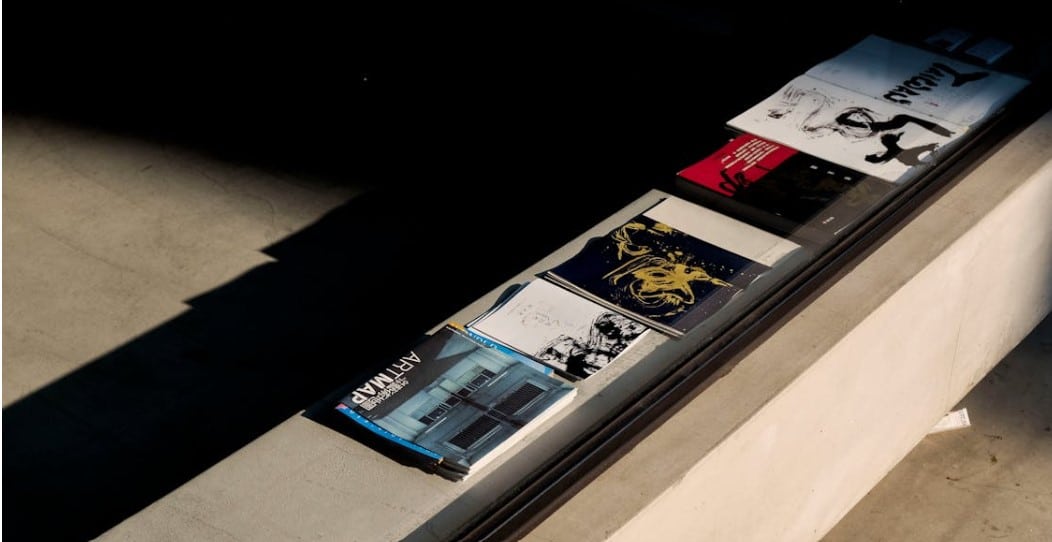Struggling to make your brand’s story resonate? You’re not alone. As digital spaces become increasingly cluttered, the allure of physical media is experiencing a renaissance. Consider this: when was the last time a brand’s narrative truly gripped you beyond the screen?
In an era where clicks are fleeting, tangible narratives stand out as relics of thoughtfulness. Forward-thinking brands realize this (and so should you). Let’s explore how infusing traditional physical media with modern branding can create an indelible imprint in consumers’ minds.

Image Source: Pexels
Crafting an overture in print
In the symphony of marketing, a brand’s opening note must captivate its target audience. Where digital content can slip by unnoticed, printed materials hold the space, demanding engagement. Take brochures and catalogs—they are no mere informational pamphlets but instruments through which a narrative unfolds page by tactile page.
Brochures and catalogs pack a sensory punch that screens simply can’t deliver. They lay groundwork for a multisensory experience (think the soft sheen of a heavyweight gloss paper under your fingers). In their construction, careful choices in typography, color palette, and imagery all converge to tell a cohesive story—one that articulates the brand’s identity before a word is read.
It’s in these details that your brand can orchestrate an emotional connection with potential customers. Artisanal methods like letterpress or embossing add layers of sophistication and bespoke quality that elevate your narrative above the mundane (a gift Apple understands well). When such care is woven into the fabric of your marketing materials, it sends an unmistakable message: this brand values quality and attention to detail. And isn’t that music to any consumer’s ears?
The renaissance of business cards: Networking with substance
Dismiss the business card as an outdated relic at your own peril. In a digital world, the tangibility of a high-caliber business card provides an unexpected jolt of connection. The exchange is not merely contact information but a personal story condensed into a palm-sized canvas.
Imagine receiving an impeccably designed card that surprises you—heavier stock, intriguing texture, an embossed logo that catches the light and fingertips. It transforms a routine encounter into a memorable interaction, reflecting professionalism and intentionality. Steve Jobs appreciated such nuance, ensuring Apple’s branding extended to every touchpoint.
But far from being mere conversation starters, these cards serve as physical reminders in an ocean of fleeting digital contacts. They linger on desks and in wallets (often when emails are long buried under inbox detritus). And with QR codes or NFC technology embedded within them, they bridge the gap between tactile tradition and tech innovation.
If we measure impact by what we remember, then let’s not underestimate the power of what can be held in hand—your brand narrative encapsulated in 3.5 inches by 2 inches tells more than just your name; it leaves an impression that resonates beyond the momentary (and isn’t that worth investing in?).
Binding your brand’s legacy in pages
The coffee table book; it’s an artifact, a collectible, a conversation-starter. It is storytelling through visuals and text combined, an emblem of the brand’s journey crafted to sit proudly on display. And following a few simple steps in creating a coffee table book online can transform your brand’s heritage into something tangible, something shareable.
Firstly, sip from the cup of introspection. What story does your brand yearn to tell? From establishing this core narrative to selecting imagery that encapsulates your ethos—every element should be carefully curated. The aim is not just to inform but to enchant the reader with rich visuals and compelling insights.
Online platforms now equip you with tools once reserved for publishing houses (a nod to democratization). With these resources at your fingertips, weave together the timeline of your legacy or showcase momentous milestones in luxurious spreads that arrest the eye yet invite lingering gazes.
This isn’t mere vanity publishing; it’s branding solidified in ink and paper. A well-crafted coffee table book articulates values without preaching them (as Patagonia’s volumes on environmental stewardship subtly manifest). It becomes more than merchandise — it is a manifesto of what you stand for, bound not just for today’s audience but as an heirloom for tomorrow’s admirers.
The art of packaging: Wrapping stories in experience
The unboxing phenomenon isn’t just about the product. It’s a narrative unfolding, a tactile theater where your brand holds center stage. Apple’s iconic packaging design underscores this; opening an Apple product is as much an event as it is a process—a deliberate choreography from outer shell to the gadget nestled within.
Packaging, when done right, carries with it the promise of discovery. It infuses everyday objects with meaning and transforms transactions into experiences (a principle luxury brands have mastered). Beyond mere protection, it speaks to the brand’s aesthetic and commitment to customer delight—a simultaneous unveiling of function and narrative.
Consider materials that evoke your brand’s core values or textures that invite touch; subtle cues like these deepen the emotional resonance of your message. Moreover, sustainable packaging not merely nods to eco-consciousness but affirms a company’s investment in future narratives.
In crafting this elemental aspect of physical branding, we must ask: what story do our packages tell upon arrival? How does the heft, texture and soundscape during unwrapping align with our ethos? A mindful approach here encapsulates care, sparks joy (to borrow from Marie Kondo), and might even earn your box a permanent spot on shelves—not for storage but for story.
Final thoughts
In the end, your brand’s touchpoints are the chapters of a larger narrative. By harnessing the power of tangible media—be it through print, business cards, books, or packaging—you craft an enduring story. Do so meticulously and each element becomes a timeless ambassador of your brand’s essence and values.







